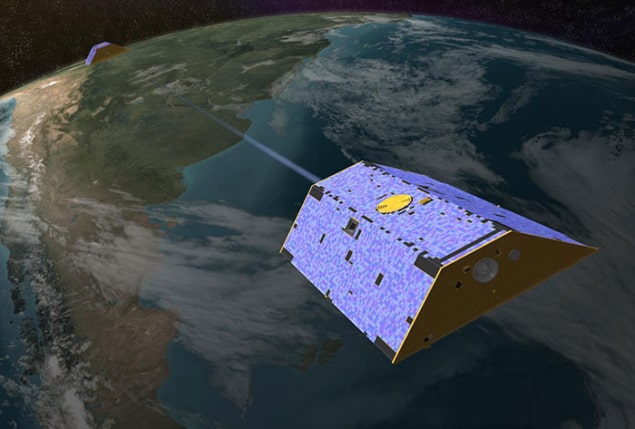
NASA should dedicate nearly a quarter of its Earth science budget towards better ways of observing the Earth. That is according to a new decadal survey for Earth observation that was released on 5 January by the National Academies of Sciences, Engineering and Medicine (NASEM). In the report, NASEM calls for a number of missions to launch in the coming decades to improve weather forecasts as well as better predict sea-level rises and other concerns, such as droughts and earthquakes.
Covering the period 2017 to 2027, the 700-page report, has been co-chaired by Waleed Abdalati, a former NASA chief scientific advisor, and William Gail, cofounder and chief technology officer of Global Weather Corp. It provides recommendations for space-based observations for the three US agencies that are involved with Earth measurement responsibilities – the United States Geological Survey, the National Oceanic and Atmospheric Agency and NASA.
While Abdalati and Gail emphasize continuity with the previous 2007 decadal survey, they highlight that the world has dramatically changed since then with individuals, businesses and communities now depending more than ever on satellite-based observation. “Earth information from space is an integral component of our daily lives and an integral component of how we live more broadly,” says Abdalati. He adds that the US military, for example, depends on satellite-based observation “to the tune of $2bn”.
The report highlights research areas to be tackled in three major categories of missions dubbed “designated”, “explorer” and “incubation”. Designated projects, which are the most expensive, include missions that would study aerosols as well as surface deformation and change. An example of a former designated mission is the Gravity Recovery and Climate Experiment (GRACE) , which launched in 2002 to measure gravitational anomalies. Gail says that GRACE has spawned a “huge revolution in our ability to understand the Earth”, and explains that the 2017 survey directs GRACE to go up to next level for refined gravitational anomaly measurements. These could be especially helpful for measuring drought and aquifer depletion, in addition to ice changes.
Explorer is a new funding line comprising of medium-priced missions capped at $350m. The report recommends explorer missions to take atmospheric-wind measurements involving Lidar and also to monitor carbon dioxide in the atmosphere. Incubation, meanwhile, focuses on programmes around $20m that would study the planetary boundary layer, surface topography and vegetation as well as advanced measurements for atmospheric winds. These capacities are “not ready for prime time”, according to Abdalati, but with investment will mature over a decade to eventually provide critical measurements.
Gail adds that the essence of the decadal surveys is that they appreciate the interconnections that make up the Earth system, pointing out that fine-scale convection determines cloud feedbacks that ultimately impacts global climate. “Satellites give us a global view and a lot of times these interconnections are multiscale,” he says. “So being able to do the global scale and connect that to the fine scale is critically important.”



